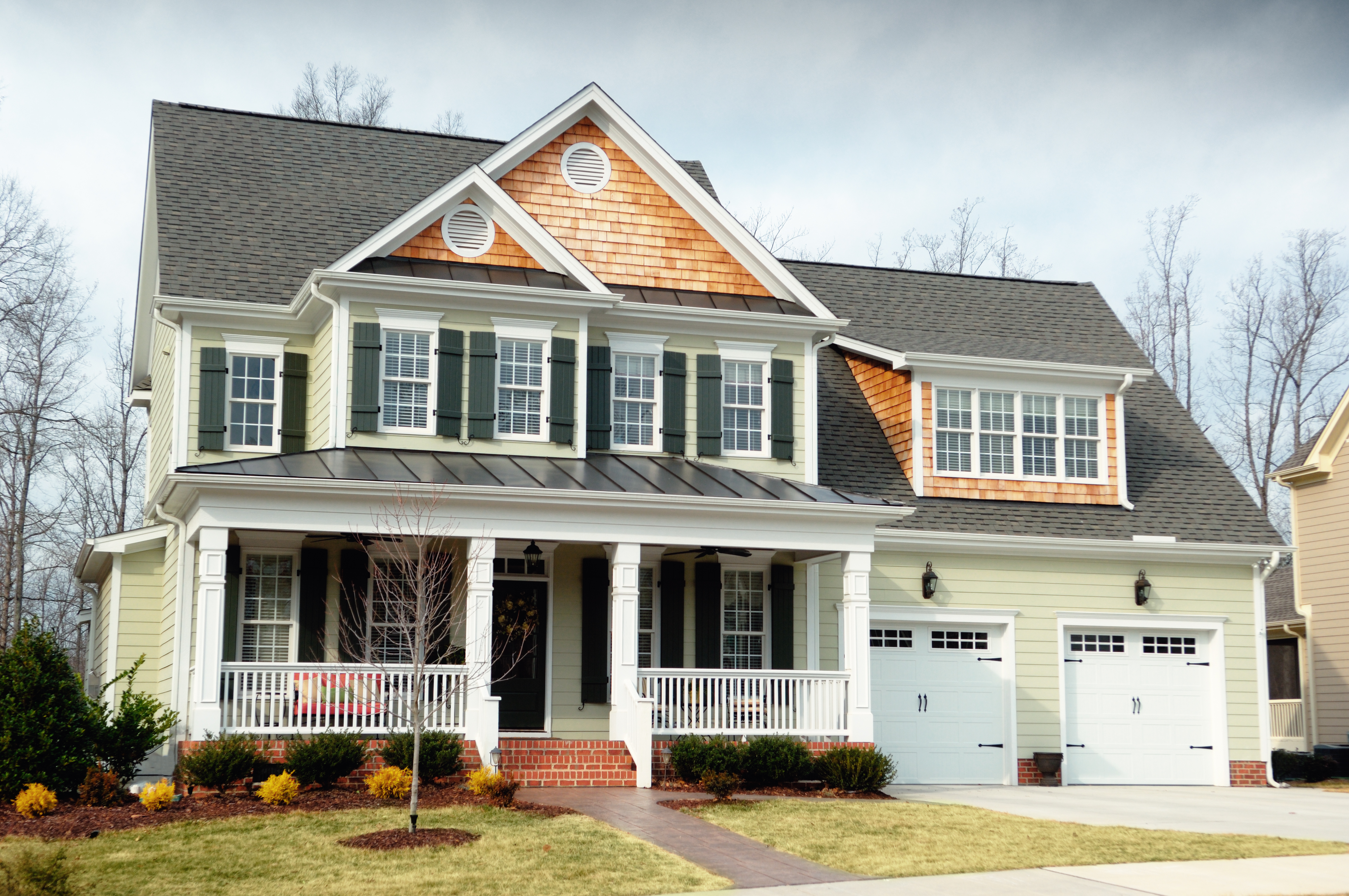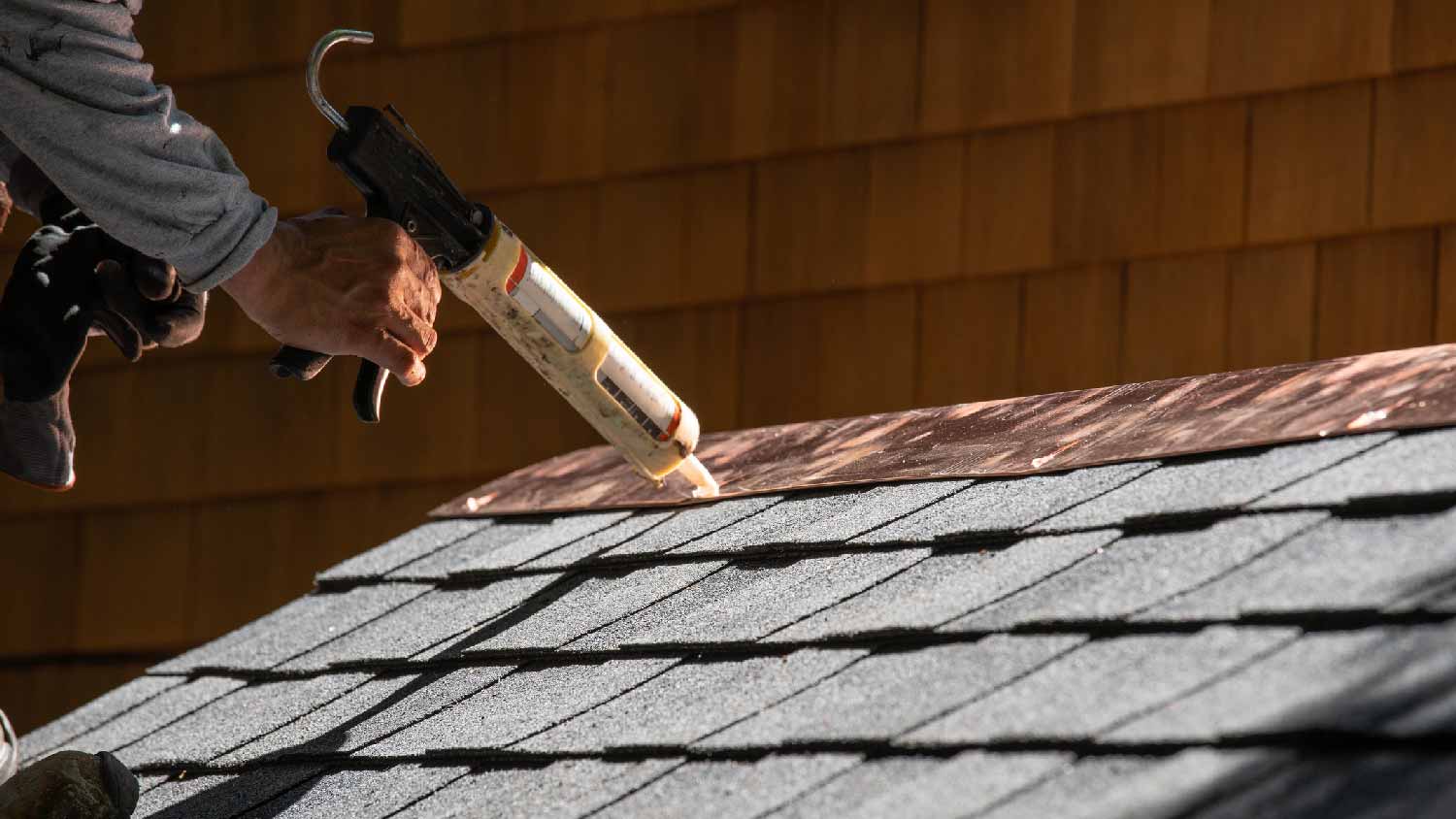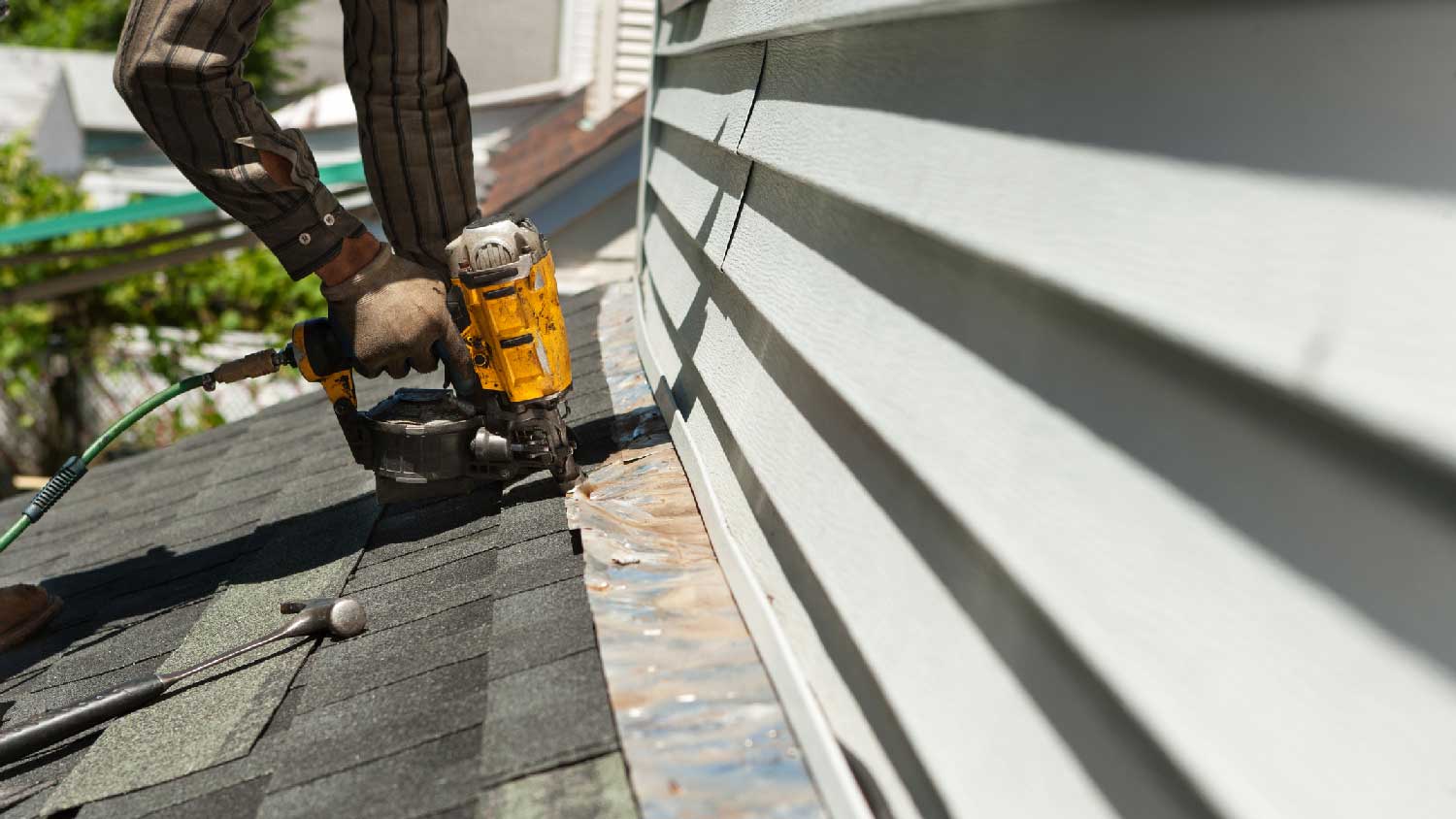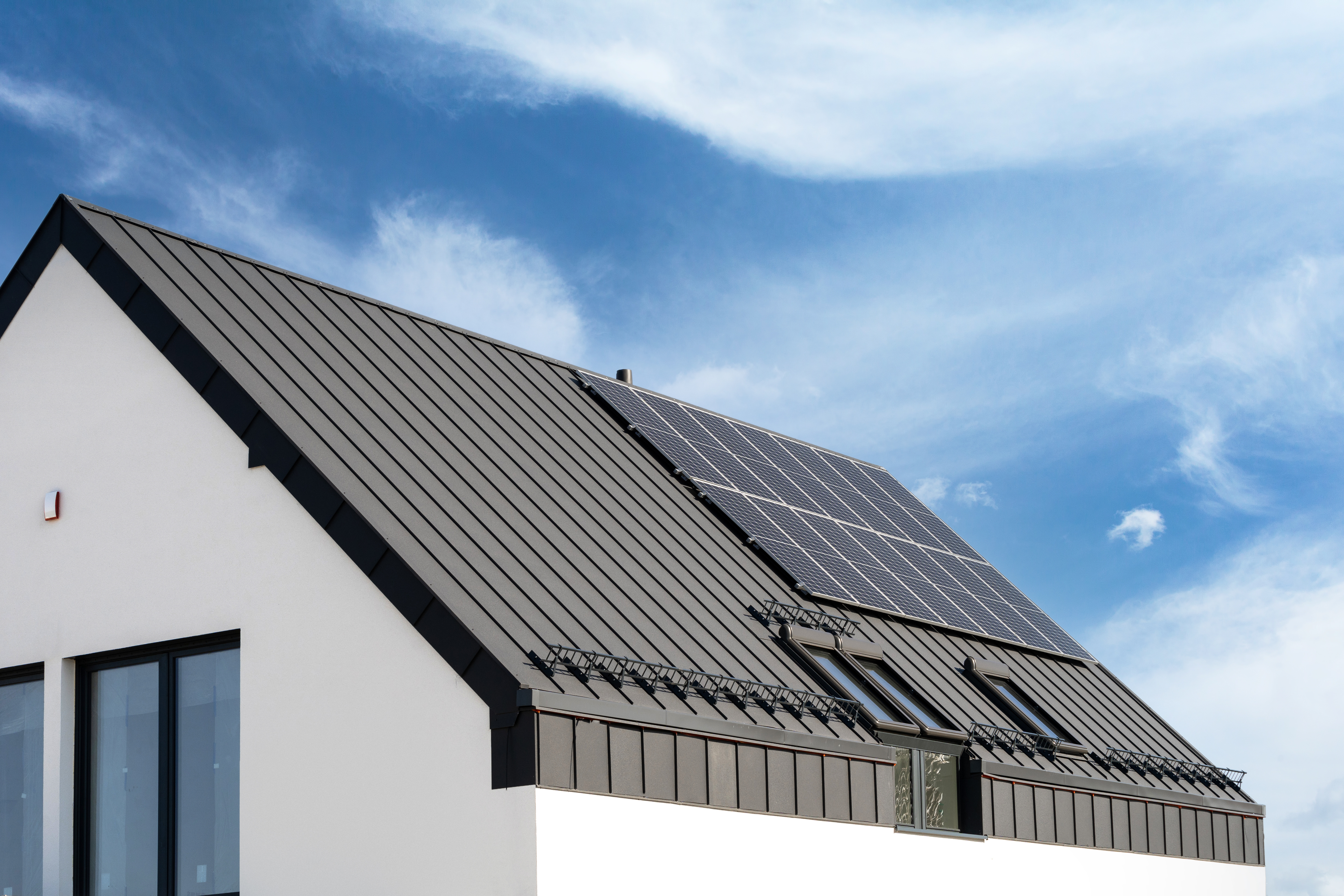
Dealing with a visibly damaged roof or leak? Learn about roof repair costs in Columbus to see how much you’ll need to budget for a permanent solution.
Stop your roof’s protection from being stripped away


Copper roof strips can prevent UV damage to asphalt roof shingles.
Using copper roof strips can also deter moss and algae growth.
Roof strips won’t prevent all kinds of damage, so it’s important to keep your roof maintained.
Your home’s roof is a big investment, and you want to protect it from as much damage as possible. Copper roof strips add a defense against some kinds of environmental damage, like UV exposure and moss and algae growth. We break down everything you need to know about copper roof strips so you can decide if they’re a worthwhile addition to your shingle roof.
Copper roof strips are lengths of flexible copper installed near the peak of your roof over asphalt shingles. When it rains on the strips, copper ions are washed down the surface of the roof along with the rainwater. The copper ions create a surface that inhibits moss and algae growth on the shingles. Moss and algae can retain significant amounts of moisture, which can damage your shingles, lead to shingle granule loss, and reduce the lifespan of your roof.
Copper roof strips can also help extend the life of your shingles by slowing down UV damage. The copper ions bond to the asphalt shingles, creating a protective barrier against harmful UV damage.
Replacing damaged roof shingles can be expensive, so investing in copper roof strips can help reduce repair and replacement costs—not to mention the hidden destruction that damaged shingles can cause.

Copper roof strips are affixed to the roof’s surface near the roof's peak using nails or adhesive. Large or lower-pitched roofs may have several rows of roof strips installed to ensure full coverage. Installing copper roof strips high up on a pitched roof allows rainwater that carries the copper ions to drain down over the surface of the roof.
Copper roof strips are fairly flexible and easy to shape around roof features, so working around chimneys, skylights, and other roof penetrations is straightforward and simple. These roof strips work well with most types of asphalt shingles—check with a qualified roofer to see if they’re a good option for your home, especially if you have older shingles or two layers of shingles.
Copper roof strips have some major benefits when it comes to preventing shingle damage, but there are a few drawbacks to consider, as well.
| Pro | Cons |
|---|---|
| Prevent moss, algae, and UV damage | Only protect against some kinds of damage |
| Easy to install | Lack of aesthetic appeal |
| Low-maintenance | Initial cost |
Compared to other roofing projects, copper roof strips are simple to install and, once installed, require very little maintenance. They offer long-lasting protection against moss and algae growth as well as UV damage without a lot of upkeep.
While copper roof strips offer a lot of protection, they don’t prevent all kinds of damage. Your roof will still be susceptible to wind damage to roof shingles, impact damage, and moisture intrusion. They’re also an added expense on top of the cost of a shingle roof—although they can help prevent repair and replacement costs later on.
Some homeowners may not love the look of copper roof strips since they tend to visually stand out against an asphalt roof. Over time, the strips can develop a greenish patina, which can help them blend in a little more.
Expect to pay about $9 to $25 per square foot for copper roof strip materials, plus an additional $6 to $12 per square foot for labor, for a total cost of $15 to $37 per square foot total for installation. The good news is that once your copper roof strips are installed, there’s very little maintenance, upkeep, or replacement costs.
Like any roofing project, unless you’re comfortable safely climbing a ladder and walking around on your roof, hire a roofing contractor to install your copper roof strips. Roof work is dangerous and can lead to serious injury, so if you don’t have experience working on a pitched roof or don’t have the necessary safety equipment, call a local roofer to ensure the job is done safely.
From average costs to expert advice, get all the answers you need to get your job done.

Dealing with a visibly damaged roof or leak? Learn about roof repair costs in Columbus to see how much you’ll need to budget for a permanent solution.

Learn about roof replacement costs in Columbus and what factors are at play to budget accurately and make sure you’re getting a fair price.

A metal roof can defend your home against Ohio’s varying weather conditions. Learn how much a metal roof costs in Columbus, OH.

Protecting your metal roof starts with the right roof insulation. Learn about the best underlayment for metal roofs to increase longevity.

Need a new roof but aren’t keen on it looking like everyone else’s? These alternative roofing materials offer a unique curb appeal, sustainability, and more.

Shingles that are losing their granules may not be protecting your roof. Learn why shingle granule loss happens and what it means for your roof.